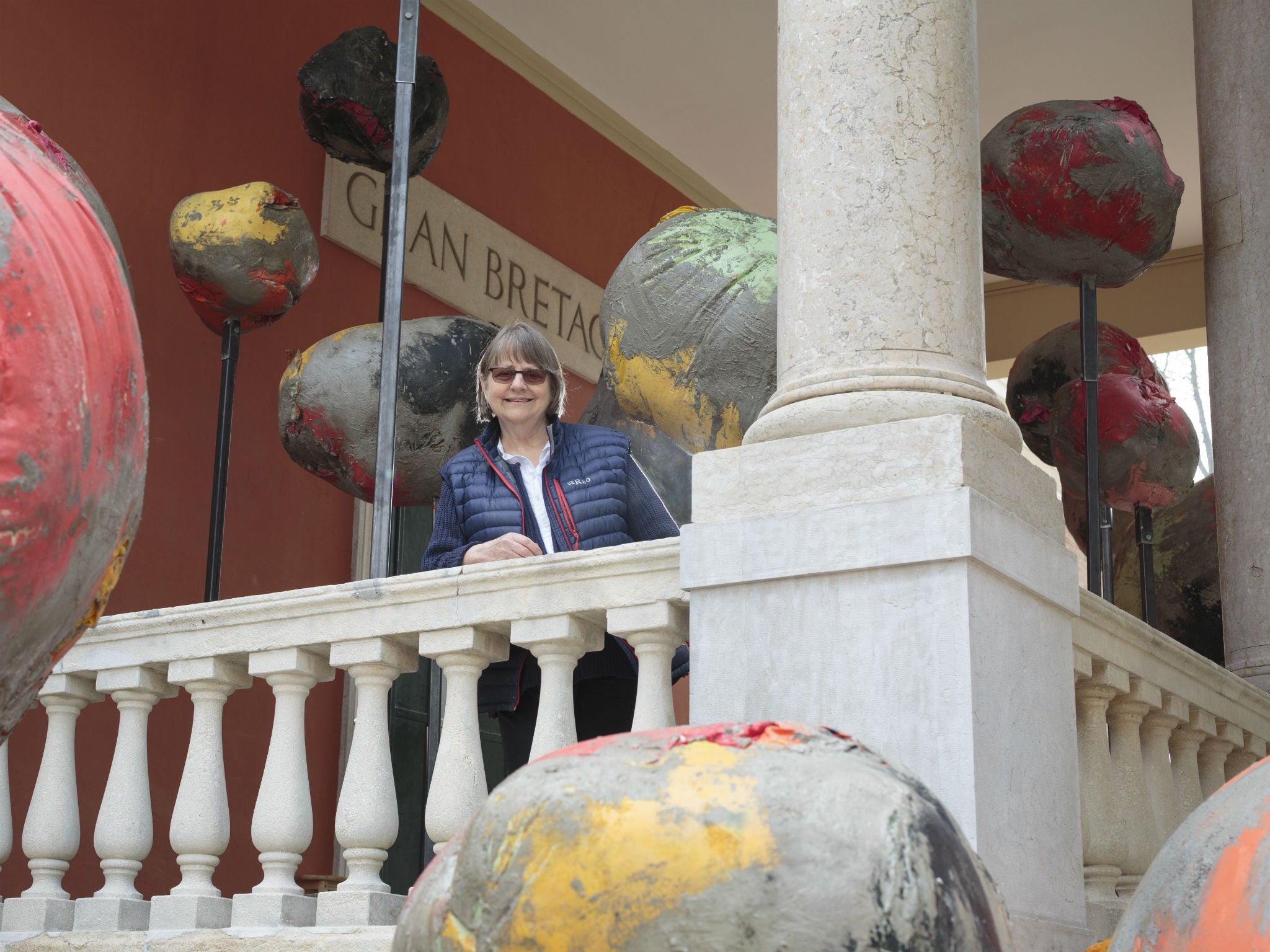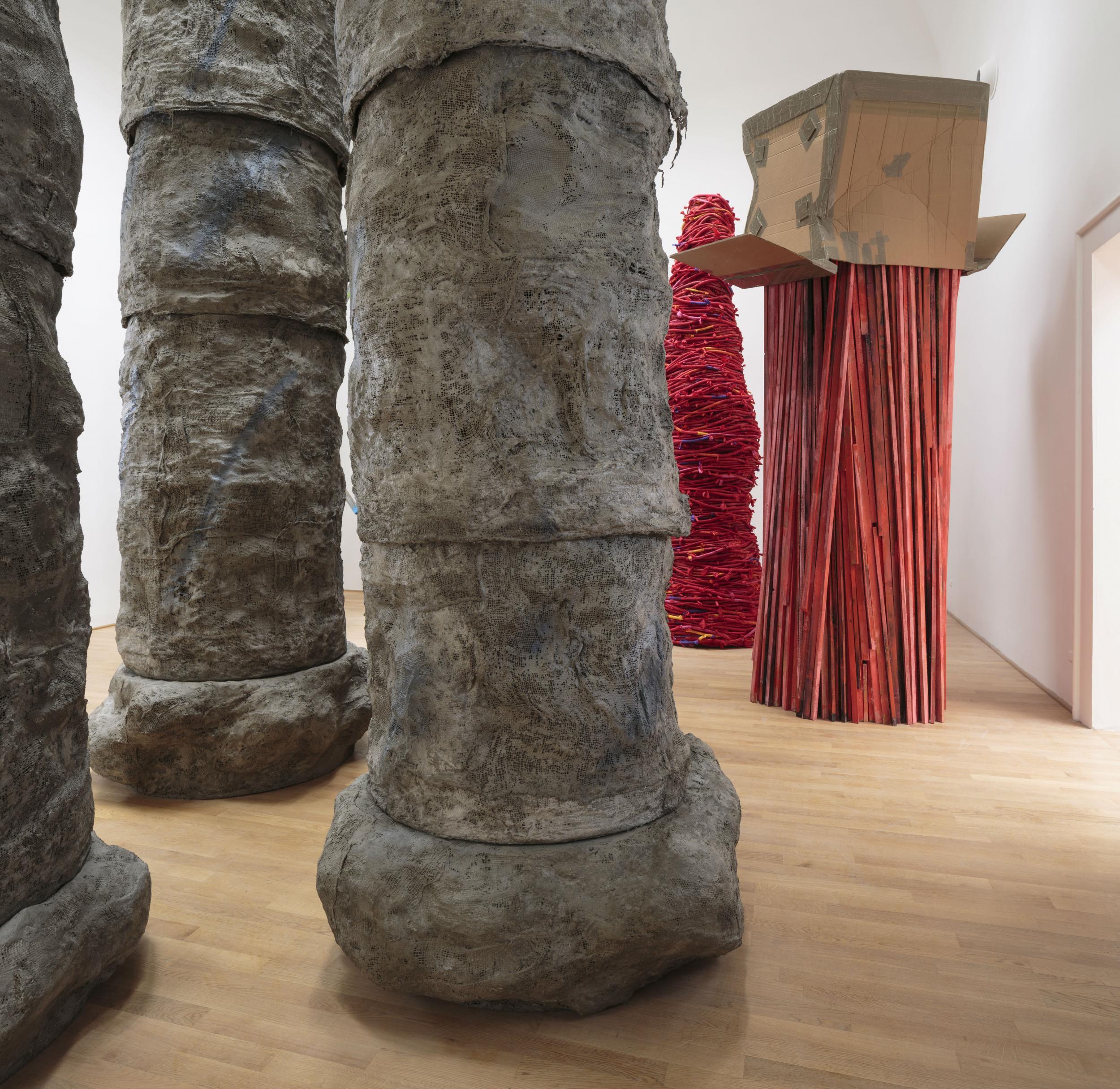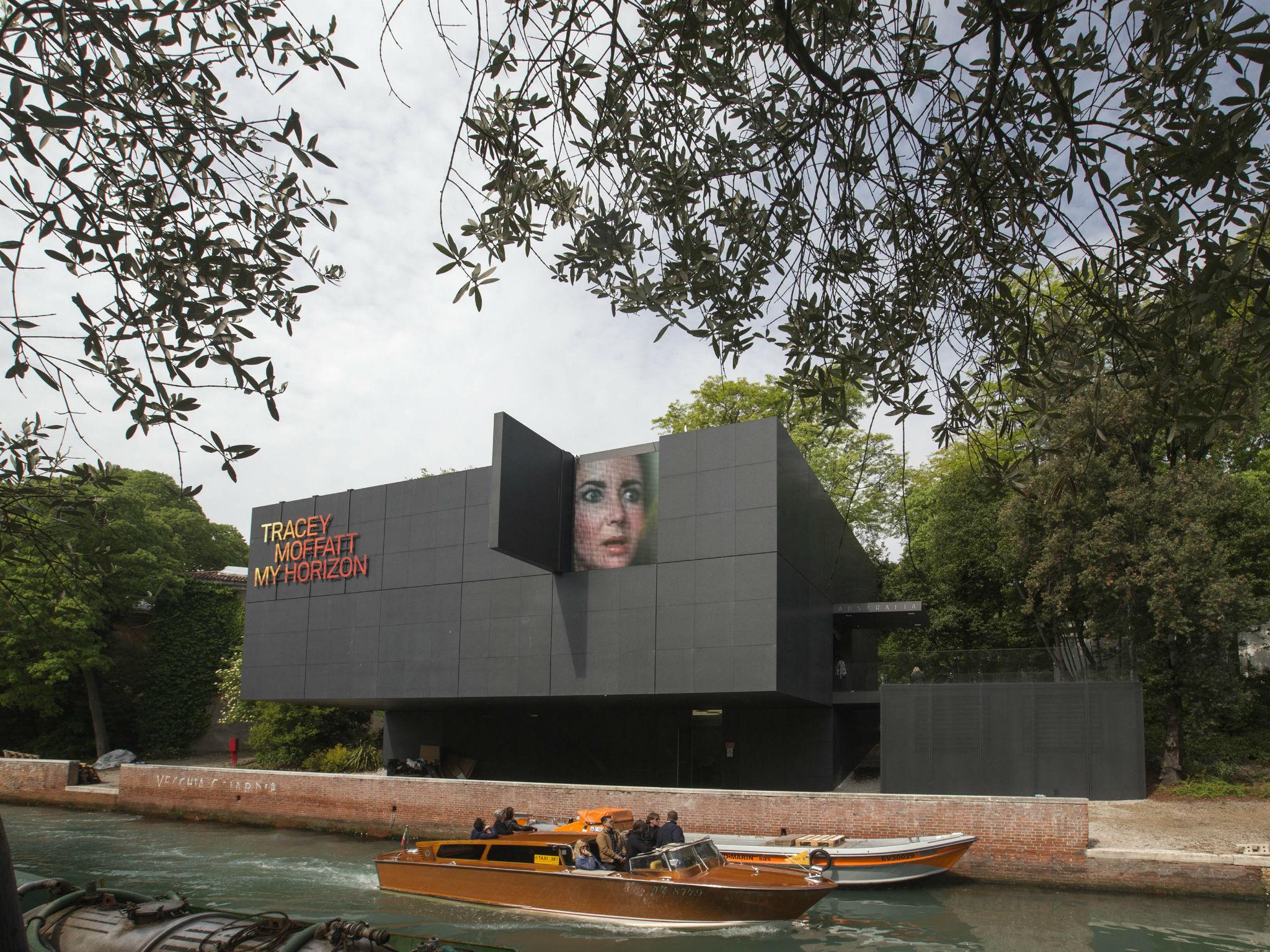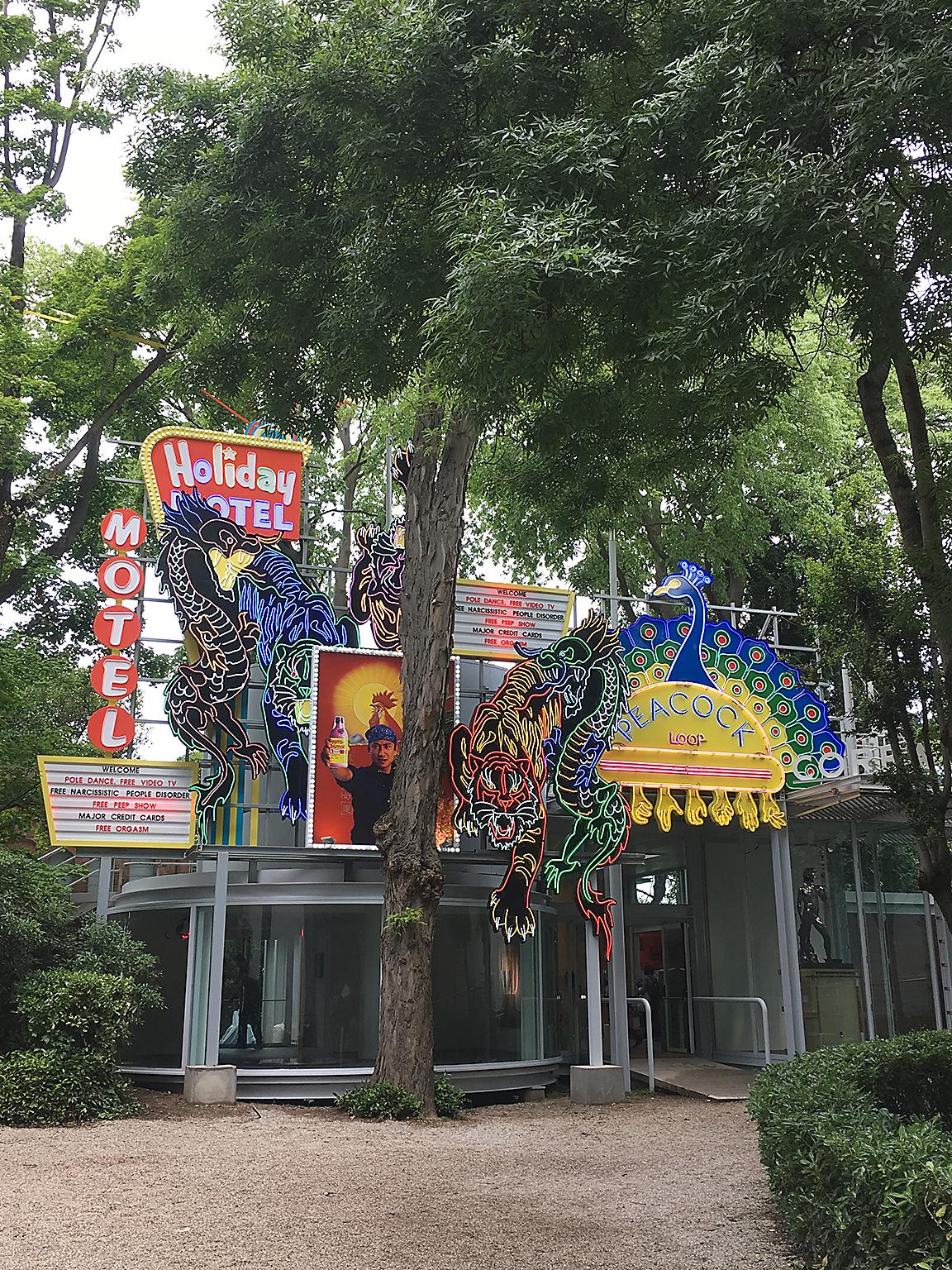Venice Biennale: How the artists revolt against their pavilions
The Giardini houses permanent national pavilions built by the various countries participating in the Venice Biennale – this year it is Phyllida Barlow who is fighting with the fabric of the British Pavilion

Your support helps us to tell the story
From reproductive rights to climate change to Big Tech, The Independent is on the ground when the story is developing. Whether it's investigating the financials of Elon Musk's pro-Trump PAC or producing our latest documentary, 'The A Word', which shines a light on the American women fighting for reproductive rights, we know how important it is to parse out the facts from the messaging.
At such a critical moment in US history, we need reporters on the ground. Your donation allows us to keep sending journalists to speak to both sides of the story.
The Independent is trusted by Americans across the entire political spectrum. And unlike many other quality news outlets, we choose not to lock Americans out of our reporting and analysis with paywalls. We believe quality journalism should be available to everyone, paid for by those who can afford it.
Your support makes all the difference.The war between artists and the built structures they occupy makes for a fascinating spectator sport, and many pitched battles are being waged in the Giardini over at the Venice Biennale this year. Nothing ever quite remains the same from one biennale to the next, of course.
Chris Ofili, in collaboration with the architect David Adjaye, gave the space a hot, tropical feel when he represented Britain in 2003. You almost had one ear cocked for the screech of a parrot. Tracey Emin pretty well left the interior alone in 2007, and the sober, squared up presentation of her paintings that summer was one of the best exhibitions she has ever staged, free of the fuss of her ego for a change. Santiago Sierra, Spain's artist of choice in 2003, decided to brick up the entrance to his national pavilion. That was the extent of the show. The point was political, something to do with the shameful gagging of mouths. What fun we all had puzzling over why we couldn't get in! At least it was memorable.
This year it is Phyllida Barlow who is tussling with the fabric of the British Pavilion, bending it to her will, bursting it open, crowding it out. Giant, roughly fabricated columns, capped by slabs, crowd the central space. Everywhere we walk we come upon ungainly outjuttings, wayward angles. The heavy is in fact light - all this stone and rock is entirely illusory, of course, skimmings of concrete over hessian.

Next door sits the Canadian Pavilion where Geoffrey Farmer's revolt is even more radical than Phyllida's. A ferocious jet of water from a Moorish fountain has blasted three quarters of the roof away, exposing the girders. Doorways have no doors any more. Is this how art re-imagines the world? Is it inclined to cause this much mayhem?
Just over the way the French Pavilion has been transformed into a recording studio, a wooden sound box for music which will change by the day, by the sculptor Xavier Veilhan. The irregular walls seem to be tumbling forward in anticipation of all the exotic instruments which threaten to go on display. Today's is a baschot. It's made from glass crystal and you wet your fingers to make the music - just like playing a wine glass, in fact.
The Russian Pavilion has been transformed into a dark-lit, cinematic site for global drama. Strange gods, part mechanised, part ancient, are raised up on plinths. Shadowy figures flicker across the walls. Global mayhem is threatened. The masses are on the march.

The Korean Pavilion has flung a brash display of neon across its facade which shouts about the corrupting influence of the fleshpots of the West. Indoors, Rodin's “The Thinker” has been re-made in an irreverent, slathery, chewing-gummy pink, and rudely set on top of a packing case. So much for Western hegemony.
The Giardini itself has always been a curious place. Many of the pavilions are huddled up together as if against the threat of rain. They hide away amongst trees or lose themselves amongst strange bits of ad hoc landscaping. Australia is quite a tricky one to find. It hides behind the Czech Republic as if the two are engaged in a childish tussle. Tracey Moffatt is representing Australia this year, with photographs which look cinematically staged.
The pavilions are a shameful architectural hodge-podge, of course, created at different times, and in quite different styles. The German pavilion is a severely unyielding, grandiose affair from 1909. This year, human sculptures sit about in there on plinths, half way up the walls. Occasionally they fling themselves forward or flex at the knee of lean out into space. A second floor has been laid over the first. It's made of glass. We walk on air, staring down uneasily at the marble two feet below our feet. All very stimulatingly eerie.

Israel's pavilion is low-lying, elegantly sleek and Bauhaus in style. Unfortunately, artists often have a tough time in it. The ceilings are low and the floor space oddly pinched and ill-shaped - especially upstairs. This year Gal Weinstein is the artist in residence. His upstairs piece consists of what looks like huge billowings of cotton wool constrained by meshing. It concludes in an over-long unicorn's horn. The wall text explains it all, just in case you were curious: an expression of military violence. Ho hum.
What's the Venice Biennale all about this year? A journey. An epic poem. A choreography.
Or so says Signor Baratta, the director of the Venice Biennale, of this year's jamboree, with an expansiveness bordering on the ridiculous. Unfortunately, the problem with the biennale remains the same of course, year on year (it's been going since 1895): how the devil can you expect contemporary art to compete for serious attention in a city which is itself one of the greatest manifestations of the artistic spirit on earth?

It can't, of course. But the poor thing has to try.
Each year there is a new curator, who is in charge of the huge group shows which dominate the Arsenale and the old Italian Pavilion in the Giardini. This year's is Christine Macel, who has been chief curator at the Centre Pompidou for almost twenty years. She has been developing a department of 'Creation contemporaine et prospective' over there in Paris. Doesn't that sound wonderful and exactly what we all need?
Fortunately for time-locked, water-locked and often water-logged Venice, she has now brought her crystal-ball-gazing to the Biennale in order to give critics and visitors alike a bit of a shake-up over the next six months. Of the 120 artists chosen by Macel, 103 of them have not been shown in Venice before.
There have always been the many national pavilions at the Venice Biennale, and there are 103 of them here this year. But Christine Macel has now introduced the notion of themed, Trans-National Pavilions into her group shows. There are nine of them in all, some with names which sound either vapid of poetic or both. Artists of all ages and from everywhere are showing at the Pavilion of Joys and Fears or the Pavilion of the Shamans or the Pavilion of Time and Infinity, etc. There will also be round-table, meet-the-artist discussions on a Thursday and Friday of every week where you will be able to interrogate them over a casual lunch about what makes them tick, and why and how they do what they do.

Do these pavilions work? Yes and no. The two in the Giardini – the Pavilion of Artists and Books and The Pavilion of Joys and Fears – spend far too much time examining the artists themselves and how they work. It feels like navel-gazing. Artists are important for the work that they produce and not for themselves alone. The Pavilion of Joys and Fears is the better of the two because it shows how human feeling has manifested itself in work of quality – see the paintings of the human face by the Syrian painter Marwan, for example, or Suspension, the marvellous video by Patagonian artist Sebastian Diaz Morales, in which a suspended male body emerges from dense cloud.
Over at the Arsenale one Trans-National Pavilion blurs into another. The Pavilion of the Common examines art as a collective, community-building endeavour. There are far too many planetary dances and ritual marches on display. The display of collective Utopianism feels as dull as it is worthy.
What do the artists do all day? Some of them wander around like free-lance hucksters in the blazing sun. They're here to be seen and talked about. No nation has chosen them. They've chosen themselves. Now which British artist is likely to have pulled off such a stunt? You've guessed right. Grayson, that just-look-at-me, fame-greedy narcissist to end all narcissists, the man who just couldn't wait to be on first name terms with the entire nation. Amazing though it may sound, one year he stood around in his best Claire frock, hour after hour, beneath the broiling Italian sun, in the avenue which leads up to the British pavilion, button-holing people, perhaps speaking of his fame to come - a bit like the Ancient Mariner in reverse. Not recently though.

There are of course many other exhibitions in other grand spaces on the Island which have opened to benefit by all the publicity the Biennale generates. The most lavish of these are in the two buildings under the custodianship of Francois Pinault, the old Customs House and the Palazzo Grassi.
Which brings us neatly around to the subject of Damien, another man with whom we are all on first-name terms. Were you aware that his name is on the back of the public buses which carry you in from Treviso Airport. Why? Because he is trying to make a big splash all over again with a bunch of colossal, grandiose, fantastical sculptures which, he makes-believe, have been dredged up from the sea bed in order to be displayed at the two locations mentioned in the last paragraph. To call them ridiculous or over-the-top is to sell them short. It's the latest re-make of The Pirates of Penzance, and they feel perfectly at ease here, in the safe company of La Serenissima, which is, of course, an equally fantastical creation risen up by magic from the waters.
Venice Biennale runs from 13 May to 26 November 2017
Join our commenting forum
Join thought-provoking conversations, follow other Independent readers and see their replies
Comments